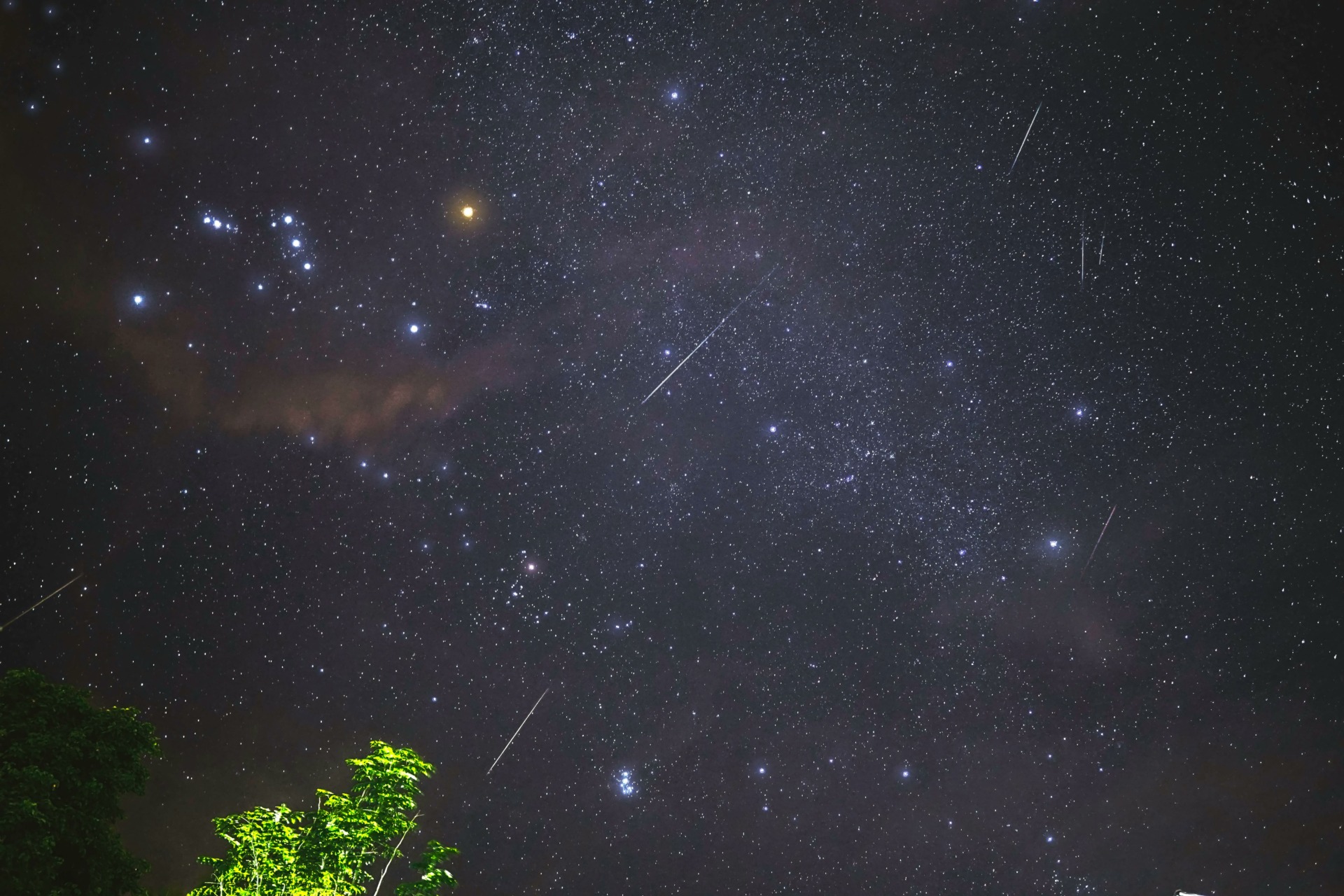When waste from comets or asteroids (better known as meteoroids) enters the Earth’s atmosphere, it creates beautiful, blazing streaks of light across the sky that most people refer to as shooting stars. The debris that causes these luminescent trails is actually created by meteors traveling at extraordinarily high speeds as the friction burns through the gases surrounding the earth. Meteor showers occur when clusters of meteors all enter the atmosphere on a parallel path for a period of time, typically when Earth crosses through the path of a comet.
FOLLOW US ON FACEBOOK & INSTAGRAM
So far this year, we have already had some stunning major meteors showers that have lit up the skies from the Quandrantids meteor shower at the beginning of the year in January to the Perseids meteor shower that just peaked earlier this month. Luckily, there is still a handful of noteworthy meteor showers coming up this year, so you can start putting together your game plan for a night of wonders.
Most people might only pair cannabis and space-related events together for more lighthearted reasons (aliens sightings, anyone?), but there’s a good reason to incorporate cannabis into your night of skywatching and stargazing beyond giggles and sci-fi jokes.
During a meteor shower, the goal is to spot as many bright flashes as possible in the night sky. For this activity, you’ll need to be patient and find an area where you can be comfortably reclined. Try to find a safe, dark place that’s free of light pollution to get the best sights possible. Cannabis will help you with staying pleasantly relaxed enough to enjoy the lull between meteor sightings as well as enhance your senses. Consider a balanced, hybrid strain that will stimulate some cerebral activity while your body unwinds.
RELATED: Enhancing the Solar Eclipse with Cannabis
Check out this list of some annual meteor showers coming up this year, mark your calendars and pick out your favorite strain for the occasion.
The Orionids
Debris from Halley’s Comet is to thanks for this annual meteor shower that takes place every fall from October 4 to November 14. Although Halley’s Comet only passes Earth every 75 years, our planet intersects the comet’s orbit, giving us a chance to witness one of the most recognized celestial events. The best window for viewing this meteor shower is between October 21-22 with the peak coming on October 21.
The Leonids
Viewers might be able to spot up to 20 meteors per hour from November 5 to November 30 during this meteor shower that borrows its name from the constellation Leo. Although the brightness of the moon might limit visibility during the earlier days of the meteor shower, a new moon mid-month will arrive just on time for the peak from November 17-18.
The Geminids
This meteor shower first discovered 2,000 years ago is known for being one of the most intense of them all, but unlike most other showers, comet debris has nothing to do with this unique shower that is actually associated with an asteroid called 3200 Phaethon that orbits the sun. From December 4 to December 16 this event may produce up to 120 individual meteors streaking across the sky per hour. The best nights for visibility will be December 13-14.
Ursids
For just one week, from December 17 to December 24, this modest meteor shower will be much more tame than some of the flashier events but it’s still worth trying to catch to close out the end of the year with a little bit of a figurative bang. The best time to view the shower will be near the end of its appearance on December 24th.
If you are new to cannabis and want to learn more, take a look at our Cannabis 101 post. HelloMD can help you get your medical marijuana recommendation; it’s 100% online, private and efficient.






